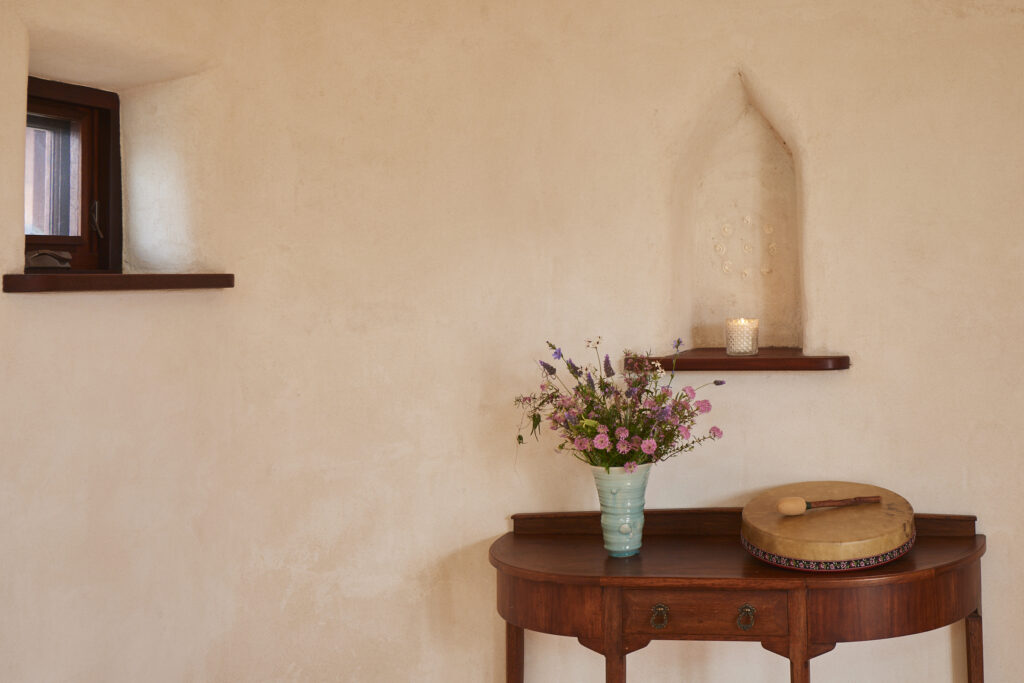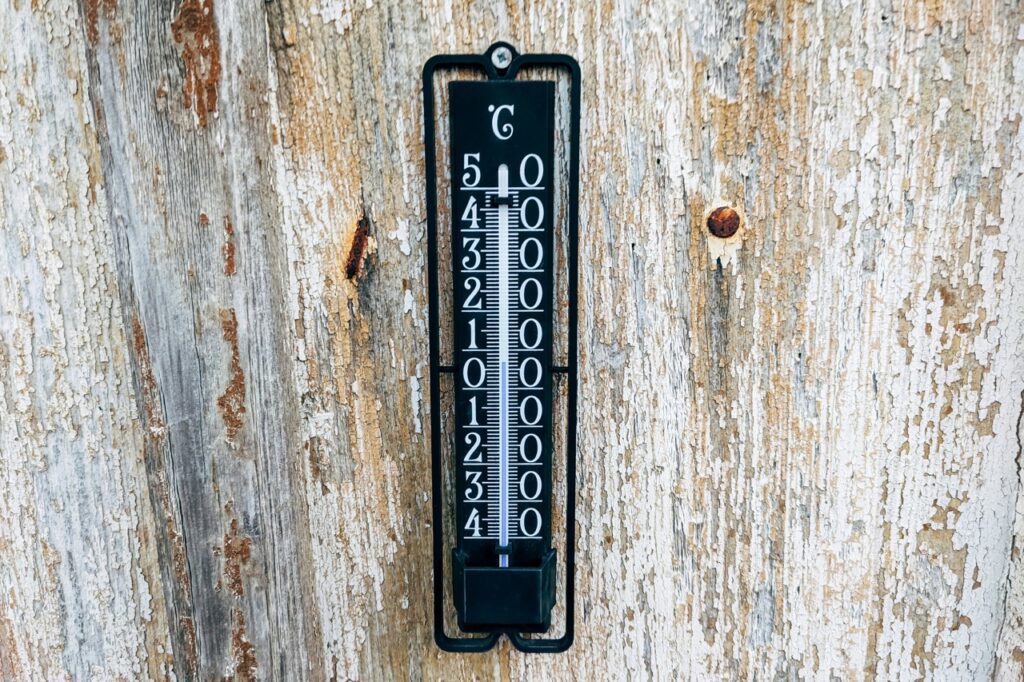Photo: Markus Winkler
We had a lot of fun doing the first survey of how well our homes are performing during a 38C day in February, towards the end of a week-long heat wave! We have assembled an awesome team of Ecovillage volunteers for this task, all but me with very scientific/mathematic backgrounds! A big thank you to new group, the Thermy Permies: Jason, Richard & Rashmi.
Many in our community may have wondered what the four crazy people were doing riding their bikes around the village for a couple of hours in the midst of a heat wave! Well, let me explain.
I posted a request on the internal Witchcliffe Ecovillage Community Facebook Group and received a quick response from many Ecovillage residents volunteering their homes for internal and external temperature measurement. The purpose of the exercise in general was to confirm if our homes are providing comfortable ‘passive’ living spaces during peak heat periods, but will also enable us to learn about the pros and cons of different construction (wall) materials, glazing, insulation, slabs (insulated or not), internal thermal mass walls, and the benefits of fixtures & fittings like curtains and solar pergola’s.
We established a set of measurements that we would assess at each home;
- the external wall temperature on the north and east side of the home (we’ll add the west to our next survey)
- the internal ‘ambient’ temperature of the north facing living room
- the ceiling & floor/slab temp in the middle of the room
- the temperature on the inside of the northern and eastern walls, in same location that we measured the external wall temp.
The most important observation was how wonderful and happy our community of house volunteers were to participate – what an extraordinary community this is! On behalf of the Thermy Permies, we thank everyone that participated for opening/offering their beautiful homes to us to measure.
The second most important observation was how proud everyone was of their homes, and how happy they are with their home’s performance/comfort, without any need for air conditioning during the heat waves. Most had curtains drawn and ceiling fans going, the two ‘low CO2 emission’ summer essentials.
We started off at the WEV office with two infrared thermometers, which after some effort we simply couldn’t calibrate. After boiling the kettle, we decided to run with the cheaper of the two, a $30 Ozito from Bunnings, as it correctly measured the temp at 100C! However, during the course of the survey it started playing up. We presume it had a heat stroke (thankfully before any of us did). So we had to call it a day before getting to the four last homes.
As such, we certainly can’t rely on these figures with 100% confidence.
The following are the average (mean) temperatures of the homes we surveyed:
External wall North 41.7C
External wall East 37.7C
Internal Wall North 24.3C
Internal Wall East 24.6C
Ceiling 24.7C
Floor/slab 22.3C
Room Temp 23.7C
Experts say that a very well designed and built solar passive home should have an internal air temperature of between 18C – 24C, year-round. Only three homes measured slightly above this range (the hottest at 25.6C), two of which were homes with young kids that were regularly opening living room doors to get outside – there’s not much one can do about that! As you can see above, our mean internal temp was 23.7C, which is outstanding on a 38C day after a week of very hot weather. The only home that was above 24C that didn’t have kids appeared to have some missing insulation batts in the ceiling as we could see sections of the ceiling that were much warmer than others. I discussed this with the owner and after getting inside her roof the following weekend, I discovered that the builder’s electrician had removed eight large areas of insulation to access downlights and ceiling fans and hadn’t reinstalled it. No wonder it was at least 2 degrees warmer inside than it should have been! Upon informing the builder, who was very embarrassed and disappointed in his sub-contractor, he came out to reinstall it all himself. How many times does this happen and people aren’t aware of it?
A few observations that we have made:
The three most important factors associated with external wall temp were colour, thermal mass and shading. However, colour appears to have a much greater impact than anticipated, possibly equivalent to mass and shading. Hardie boards painted white, which is about the most affordable wall construction option available, were hard to beat for external wall temperature.

The coolest home inside was a strawbale home at 22C, which didn’t surprise me as it’s also hard to beat the level of insulation provided by the thick strawbale walls. The next coolest was a timber framed home (22.3C) with white Hardie Board, soaring ceilings and meticulously installed insulation (owner built by a carpenter). Two homes followed very close behind at 23C, one being a timber framed home with very light coloured Hardie boards (also owner built with rigorous attention to detail when installing the insulation) and the other being a Hempcrete ‘Settler’ (one of our designs). A range of other timber framed and hempcrete homes were hot on their heels behind these two with most homes sitting between 23-24C.
It’s worth noting at this point that these results are even better than they look as they are all going to improve substantially as our gardens and deciduous shade trees grow, along with household savings, so we can all eventually afford good quality block-out blinds and summer-shading pergolas, as our windows are our greatest thermal leaks (even with double glazing which all homes in the Ecovillage have). Several of the homes that were assessed are yet to install solar pergola’s to the north.
There are three very important types of home construction that we didn’t get to assess: one is reverse brick veneer, which I’m super keen to assess in due course, particularly as it’s what Michelle and I are about to start owner building on our lot in cluster 2B. Another is a thoroughly designed and built PassivHaus, of which we have a couple under construction at present, and the third is SIP’s panels, of which we also have a couple under construction at present, but none completed. I expect very high performance from all of these types of wall construction. Quite remarkably, the owner of a magnificent PassivHaus that’s being built in cluster 3B at present has informed me that they expect their home to sit at 22C year round. I can’t wait until this home is completed and monitored.
This article first appeared in a residents bulletin, where I was a bit reluctant to post these results as it’s not a competition – not that that’s the way of our community. It’s about learning what we can from the awesome example we’re all setting together, and we’re all keen to learn from these results. It’s also important to remember that these results won’t be in the same order in the middle of winter, which from an energy perspective is probably more important than summer performance. I expect Strawbale, Reverse Brick Veneer, PassivHaus and Hempcrete may be hard to beat in winter due to the combination of excellent insulation and thermal mass, but I also expect that the majority of our homes will sit around 18-19C in the midst of the coldest weeks in winter, which is very comfortable living indeed!
We feel that on-going monitoring is so important, particularly due to the huge difference in building costs associated with different construction materials and methods, so we’re about to invest in some much more reliable temperature monitoring equipment, which will also include particulate and CO2 levels.
It was very hard to return home to our stinking hot house in Margaret River after doing these assessments. Our home was owner built by a builder in the 90’s, predominantly timber framed out of beautiful dressed jarrah, but with almost zero insulation! 🥵
However, before returning home that evening, I went for a swim in the dam after leaving the WEV office at 6pm and Shelle and I sat on our Ecovillage lot for a picnic dinner and a couple of glasses of our 2018 Foxcliffe (Ecovillage) Cabernet. It was the first bottle of the 2018 that we’ve opened since it was bottled in 2019 – it was magnificent, as was Shelle’s home-made take away dinner! We sat under the extraordinary view of the Milky Way, which shines so bright for all of us in the Ecovillage (due to the fight we won with the Shire engineer who wanted street lights throughout) and we both had to pinch ourselves that we’re finally here, sharing our dream of a sustainable life with an extraordinary group of people that all want to walk their talk and show the world how sustainable our human settlements can be.
We’ve just got to build our home first (more about this in another article in this newsletter).

